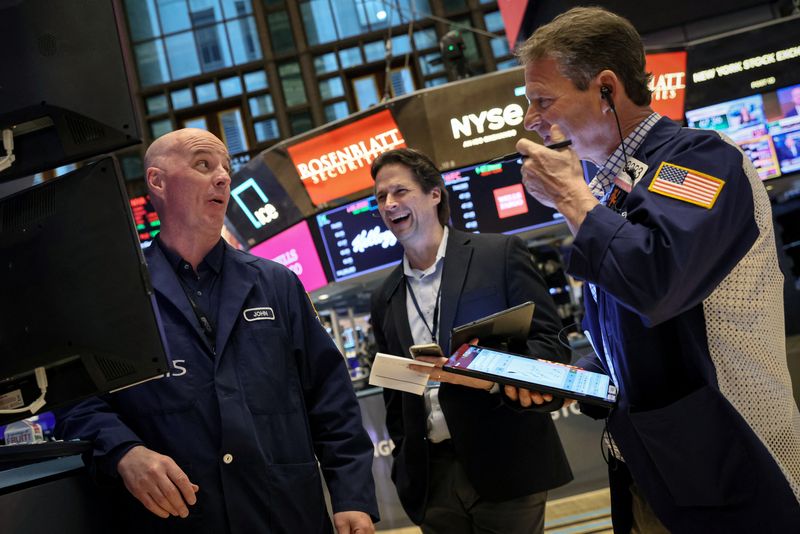By David French
(Reuters) - The S&P 500 extended its losing streak to four sessions as Wall Street ended broadly lower on Wednesday, with investors cautious despite the latest guidance on rate policy from the U.S. central bank showing few surprises.
Minutes from the Federal Reserve's Jan. 31-Feb. 1 meeting said that "almost all" Fed officials agreed to slow the pace of increases in interest rates to a quarter of a percentage point.
There was also solid backing though for the belief that the risks of high inflation remained a "key factor" that would shape monetary policy and further rate hikes would be necessary until it was controlled.
Such messaging carried few surprises versus what the Fed and its governors have been communicating in recent weeks, and stocks were broadly steady in the wake of the minutes' release, after choppy trading prior to their publication.
However, a general weakening in the final hour of trading pushed both the S&P 500 and the Dow Jones Industrial back into the red. The Nasdaq Composite managed to scrape back into positive territory though in the final moments, ensuring its own losing streak was snapped at three.
"It's clear that the Fed is determined to keep on with its rate-hiking campaign, and they are going to do it even as recession risks grow," said Ed Moya, senior market analyst at OANDA.
"And that's why, after digesting the minutes, you saw markets softening a little bit."
For the S&P, it is now on its longest negative run since mid-December, and finished below 4,000 points for the second straight day: a level not recorded since Jan. 20.
The Dow fell 84.5 points, or 0.26%, to 33,045.09, the S&P lost 6.29 points, or 0.16%, to 3,991.05 and the Nasdaq added 14.77 points, or 0.13%, to 11,507.07.
Despite the declines experienced by the S&P and the Dow, the falls were not as sharp as Tuesday's, which was the worst daily performance posted by markets in 2023.
Following a market rout in 2022, the three major indexes logged monthly gains in January as investors hoped the Fed would pause its rate hikes and perhaps pivot around year-end.
However, stocks have had a volatile run in February, as traders priced in higher interest rates for longer, assuming that inflation remains higher in a sturdy economy.
Money market participants expect rates to peak at 5.35% by July and stay around those levels till the end of 2023.
"We'll see what happens with equities, but I think downward momentum should lead over the next couple of weeks," said OANDA's Moya.
Most of the 11 major S&P 500 sectors fell, with energy and real estate the poorest performers. The duo declined 0.8% and 1%, respectively.
The energy index has finished lower for seven straight sessions, as commodity prices have come under pressure from investor concerns over future economic growth and fuel demand. [O/R]
Meanwhile, CoStar Group (NASDAQ:CSGP) Inc fell 5.1% after the online real estate marketplaces provider said it was no longer in talks to buy Realtor.com owner Move Inc from News Corp (NASDAQ:NWSA) - which, itself, closed 3.2% lower.

Volume on U.S. exchanges was 10.58 billion shares, compared with the 11.61 billion average for the full session over the last 20 trading days.
The S&P 500 posted four new 52-week highs and one new low; the Nasdaq Composite recorded 36 new highs and 110 new lows.